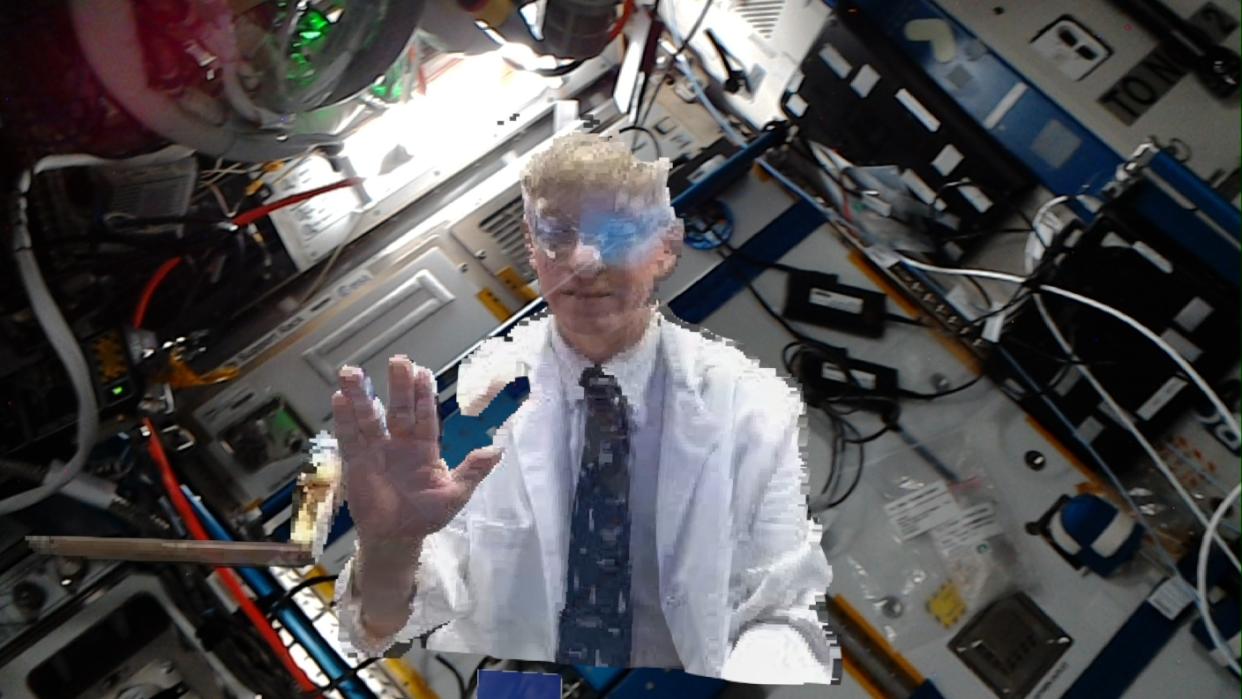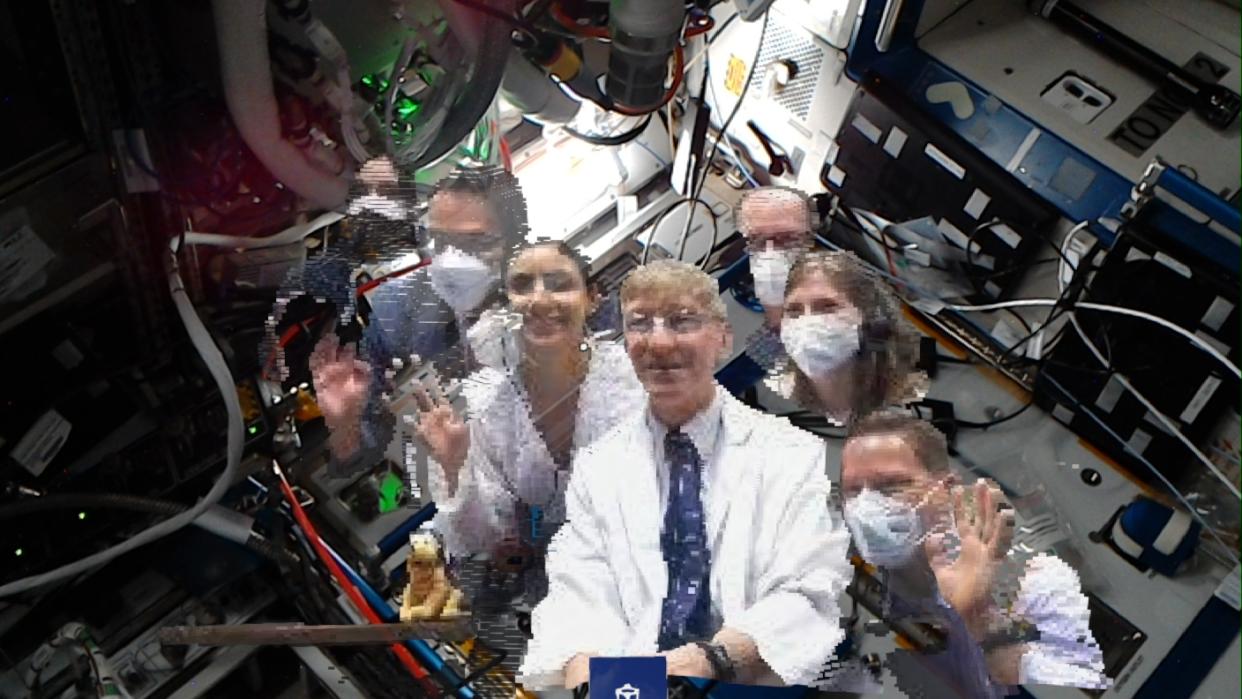Nasa doctor is 'holoported' to the International Space Station for the first time

Talking 'holograms' have long been a staple of science-fiction films such as Star Wars.
Now a Nasa doctor has 'holoported' onto the International Space Station (ISS) for the first time.
The technology uses Microsoft’s Hololens Kinect camera to capture high-quality 3D models of the doctor and transmit them to the ISS.
In future, Nasa hopes to use the technology to 'holoport' celebrities, psychiatrists and family members into space to visit astronauts.
Nasa flight surgeon Dr. Josef Schmid and AEXA Aerospace CEO Fernando De La Pena Llaca became the first humans holoported from Earth into space.
On board, astronauts wore Microsoft's 'mixed reality' Hololens display – the screen is transparent, so users see a mixture of reality and projections.
The holoportation technology allows users to see, hear and interact with remote participants in 3D as if they are actually present in the same physical space.
Using the Hololens Kinect camera and a personal computer with custom software, European Space Agency (ESA) astronaut Thomas Pesquet had a two-way conversation with live images of Schmid and De La Pena in the middle of the ISS.
Read more: Spacecraft malfunction as Earth’s magnetic field weakens

Read more: Mysterious ‘gravity waves’ seen rippling in our atmosphere
Schmid said: "This is a completely new manner of human communication across vast distances.
"Furthermore, it is a brand-new way of human exploration, where our human entity is able to travel off the planet. Our physical body is not there, but our human entity absolutely is there.
“It doesn't matter that the space station is travelling 17,500 mph and in constant motion in orbit 250 miles above Earth, the astronaut can come back three minutes or three weeks later and with the system running, we will be there in that spot, live on the space station."
Nasa is demonstrating this new form of communication as a precursor for more extensive use on future missions.
Plans are to use this next with two-way communication, whereby people on Earth are holoported to space and astronauts are placed back on Earth.
Schmid said: "We'll use this for our private medical conferences, private psychiatric conferences, private family conferences and to bring VIPs onto the space station to visit with astronauts."
The step after that is to combine holoportation with augmented reality, to truly enable tele-mentoring.
Schmid said: "Imagine you can bring the best instructor or the actual designer of a particularly complex technology right beside you wherever you might be working on it. Furthermore, we will combine augmented reality with haptics. You can work on the device together, much like two of the best surgeons working during an operation. This would put everyone at rest knowing the best team is working together on a critical piece of hardware."
Holoportation and tools like it could have great implications on the future of deep space travel to destinations such as Mars.
They could also be used here on Earth in extreme environments such as Antarctica, offshore oil rigs or military operation theatres.
Watch: Cosmonauts install robotic arms on ISS


